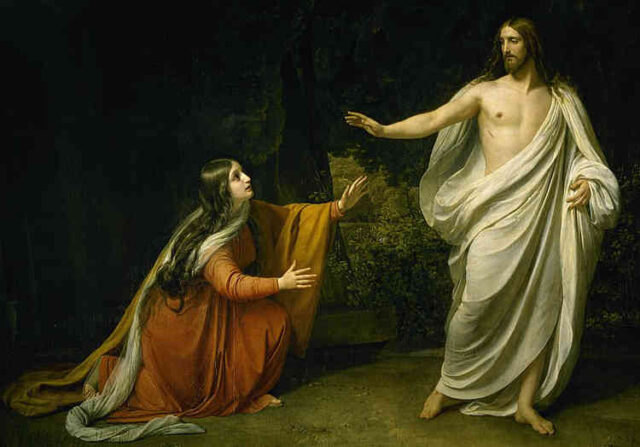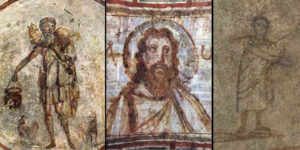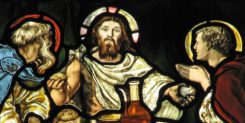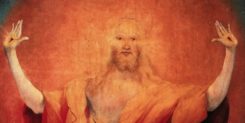The resurrection of Jesus is perhaps the most argued-over belief in christianity.
For most christians, it is at the very core of their faith. For many non-believers it is an impossible-to-believe miracle. These views are so far apart, it is hard to find any common ground to begin discussion. Is it simply a matter of faith, or even blind faith, vs disbelief? Or can it be examined like any other historical question?
New Testament historian Dale Allison’s book on the resurrection (The Resurrection of Jesus: Apologetics, Polemics, History) is a cautious and detailed historical examination, and goes a long way towards answering these questions. Although he identifies as a christian (albeit not your average evangelical christian), his analysis is quite historically sceptical. He is even-handed in his scepticism, questioning both belief and unbelief.
His final conclusions are quite tentative, which means that believers and unbelievers alike should feel free to accept them or question them. This book has helped me understand what might be considered a truly “minimal facts” set of historical conclusions.
On this page I summarise his book as a preparation to examining his conclusions. For a more detailed discussion of the resurrection, see Was Jesus raised from the dead?)
The resurrection of Jesus: the book
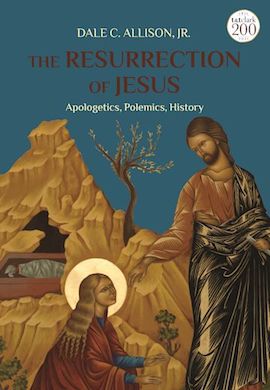
Dale Allison is pessimistic about how much of history we can know and believes his book only scratches the surface of a complex and historically murky subject. He has specifically tried to avoid writing a book where the conclusions are known from the start, but rather allow the evidence to lead him.
This tends to set his writing apart from most who address this topic, whether believer or sceptic. It also makes it easy for me to trust him.
The content covers:
- Historical: how the resurrection accounts in the gospels have been understood and explained, and how the documentary evidence we have can be assessed.
- Analytical: evidence about visions, hallucinations and paranormal phenomena that might be compared to the resurrection, and thus assist in understanding the evidence.
- Reflection: a review of the various apologetic arguments, both for and against, and his final tentative conclusions.
Probable historical facts
As a historian, Allison is unable to accept the gospel stories at face value, and subjects them all to rigorous analysis. He tests each part of the story for historical evidence and plausibility, and has many questions. He concludes that the historical record supports the following six “facts”:
1. Burial
Joseph of Arimathea, a member of the Jewish Sanhedrin (a Jewish assembly of elders with governing powers under Roman rule in first century Israel) buried Jesus, perhaps in a family tomb. This part of the gospels’ story (especially Mark 15) rings true, it fits with practices at the time and there is no reason to disbelieve it.
2. Empty tomb
Some of Jesus’ female followers later found the tomb open and his body gone. Again the story in Mark 16 rings true and the story of the women is unlikely to have been invented. The case for historicity is stronger than the case against.
3. Appearances
Some of Jesus’ followers had visions of him apparently alive again (however we explain them). He analyses each report in detail. It seems certain that, within days or weeks after his death, Jesus’ followers came to believe he had been resurrected. The accounts of his appearances to them, although they are confused and uncertain historically, explain this belief, conform to other reports of visionary experiences, and seem to contain a core of truth.
4. The apostles’ preaching
Not long after, some of his disciples were preaching that Jesus had been resurrected. There is good agreement in the sources on the content of their resurrection teaching. The teachings don’t seem to have grown like a legend might, which also supports the conclusion that something happened.
5. Prediction
Jesus had predicted his resurrection in 3 days or on the third day (which meant a short and imprecise period of time). There are enough sayings of Jesus indicating this to suggest it is true. Jesus’ predictions contributed to later belief in his resurrection.
6. The basis of the early christian resurrection belief
The early christians’ resurrection belief was based on (1) their pre-Easter expectation arising from Jesus’ predictions, (2) the appearances of Jesus and (3) the empty tomb. Without all three, it is unlikely they would have come to this belief.
This may sound like a persuasive case for the truth of the resurrection, but Allison is strongly of the view that while these are the best historical conclusions, every one of them can reasonably be doubted. He says: “The accounts of the resurrection are, from a historian’s view, very dim candles.”
Comparitive paranormal phenomena
Allison isn’t content to just argue that the evidence gives us a binary choice between belief in the resurrection or complete disbelief. There are, he points out, many types of psychological or paranormal phenomena that have some parallels with Jesus’ resurrection.
So he examines accounts and personal experiences of visions, apparitions of the dead; Buddhist “rainbow body” experiences and modern day visions of Jesus. In the end, these comparisons leave him agnostic. It is hard to know what is going on with any of them, but it is hard to know what happened with Jesus too.
The arguments
He closes the book with an assessment of christian arguments (the psychological state of the disciples and their transformation into brave evangelists who accepted martyrdom for their belief; the apostles’ independent testimony that shows no collusion; the shroud of Turin; etc) and finds uncertainties in them all. They may well be reasonable, but one can find counter examples where similar arguments could be applied to non-christian phenomena.
Then he considers the sceptical arguments (miracles don’t occur; the inconsistencies in the accounts; the appearances were only to insiders; etc) and finds them similarly uncertain. In his view the strongest sceptical explanation of the evidence is that:
- The gospel accounts are of doubtful historicity at many points.
- Grave robbers stole Jesus’ body, a practice that wasn’t uncommon at the time. (Gruesomely, bodies were sometimes stolen for body parts to be used in magical recipes.)
- The appearances were hallucinations (not uncommon with those grieving), and the initial stories triggered further hallucinations.
But in the end, he doesn’t find this explanation convincing. Having examined the historical evidence stringently and considered both sides of the argument, Allison concludes that:
- However believable, or not, we may find it, the conservative christian view fits the historical facts (as outlined above) better than the sceptical hypotheses.
- Belief (or disbelief) in the christian explanation for the resurrection accounts tends not to be based on historical evidence so much as a person’s experience and conviction.
My conclusion
Reading this book is a little like taking a cold shower. His astringent approach to history is both challenging and invigorating.
I don’t share his historical scepticism. I believe we can trust the gospel accounts more than he does, even though I recognise there are discrepancies and inconsistencies. I think it is significant that his cautious and rigorous analysis can still affirm the six basic conclusions I’ve outlined.
But I more or less share his main conclusion, that the beliefs and assumptions that we bring to the question will determine our conclusion more than the evidence will.
So I think the historical evidence is quite sufficient to believe Jesus really was resurrected since I already accept that Jesus spoke the truth and really was representing God. As Son of God, it is totally appropriate that God would vindicate him by raising him to life.
But I also recognise that the same evidence will be unconvincing to anyone who believes there is no God. Atheists will always find the evidence insufficient to overcome the plain fact that, in the natural course of events, dead people don’t come back to life.
I think that’s where God leaves it. It isn’t the smartest or the best informed who will necessarily enter the kingdom of God, but those whose hearts are attuned to him and whose minds are open.
The bottom line
I believe, based on the minimal facts, and more, that we can truly affirm that on the third day (i.e. after a short time) God raised Jesus from death.
Read more in Was Jesus raised from the dead?
Graphic: Appearance of Jesus Christ to Maria Magdalena (1835) by Alexander Andreyevich Ivanov, in Wikipedia. Of course I don’t think this painting is realistic to how these two actually looked, but realistic pictures of Jesus are hard to find!
